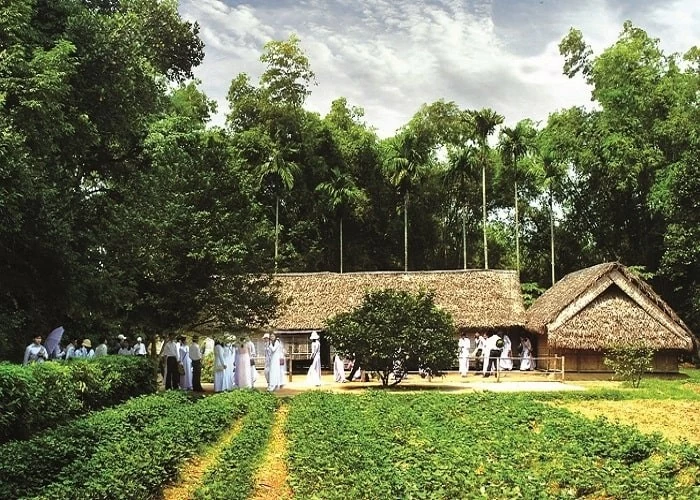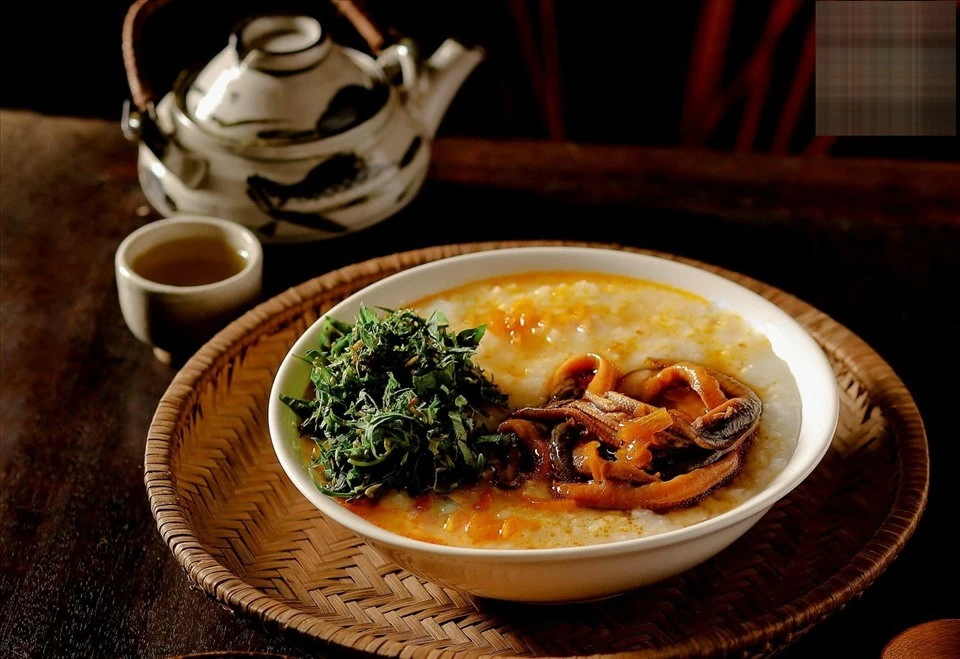
Nghe An - unveiling the treasures of Vietnam's largest province
Latest
 |
| Sen village in Nam Dan commune, Nghe An, the birthplace of President Ho Chi Minh (Source: Government News) |
Economic potential
Nghe An province in Vietnam showcases robust economic potential and growth across multiple sectors. As of 2024, the province continues to attract significant foreign direct investment (FDI), ranking second nationwide in FDI attraction in early 2022. The industrial and construction sector has seen substantial growth due to the development of industrial zones such as the WHA Industrial Zone, which received an initial investment of USD 100 million from WHA Corporation PCL Thailand. The industrial and economic zones are expected to expand, with significant investments allocated for infrastructure development, enhancing the province's industrial capabilities.
Agriculture, forestry, and fishery remain a cornerstone of Nghe An's economy. The province continues to leverage its extensive natural resources to boost agricultural output, contributing significantly to the local and national markets. Nghe An also focuses on improving its business environment and labour force to attract and sustain investment. The province has implemented programs to upgrade transport infrastructure and enhance vocational training, catering to the needs of both local industries and foreign investors. This strategic approach has positioned Nghe An as an attractive destination for businesses expanding in Vietnam and Southeast Asia.
Not-to-be-missed tourist attractions
Sen Village (Kim Lien Village) is the paternal home of Uncle Ho - the legendary leader of Vietnam. Everyone who lives in Nghe An takes great pride in this location. Sen Village is best visited in May when the lotus blossoms and releases its refreshing scent. A sizable lotus pond marks the start of the village. Uncle Ho used to spend his early years playing and fishing here with his local pals. Additionally, guests are welcome to see the simple, rustic thatched-roofed 5-room house of the family of Mr. Nguyen Sinh Sac, Uncle Ho's father.
Among the most well-known beaches in Nghe An, Cua Lo Beach draws countless visitors each summer, earning the "national beach" title for the North Central area. Stretching along the coast, Cua Lo Beach offers vast expanses of fine white sand, crystal-clear blue water, and golden sunlight year-round. The consistently gentle waves provide a safe and enjoyable environment for families with small children and those with “amateur” swimming skills to play in the refreshing water. Renowned throughout both the North and South, Cua Lo also boasts a reputation for its seafood. Summer, the peak season, offers the freshest and most plentiful seafood, making it the best time for seafood enthusiasts to indulge in their culinary cravings.
 |
| Cua Lo Beach. (Source: Traveloka) |
Cua Lo Beach is just near to Lan Chau Island. The island seems to be a gigantic toad reaching out to sea when viewed from a distance. With its untamed, serene, and lyrical scenery, this island is unquestionably the most stunning in Cua Lo. Lan Chau Island with its stone road and Lan Chau lighthouse, although not as splendid as other lighthouses in other regions of the country, still possesses a peaceful and romantic beauty.
You want to immerse yourself in the nature of flora and fauna? Pu Mat National Park is promising to satisfy your wishes. This primeval forest with a total area of up to 194,000 hectares has long been an attractive eco-tourism destination for all visitors to Nghe An. In addition to its breathtaking beauty and the most varied forest environment in the Central area, this location draws visitors with its newly developed tourism offerings, which include boating to take in the views, fishing on the river, and engaging in cultural exchanges with local Indigenous people. From June to August, when the weather is pleasant and dry and perfect for all kinds of fun and discovery, is the best time to explore Pu Mat National Park.
Culinary delights
 |
| Nghe An’s eel soup. (Source: VTC News) |
Nghe An has numerous notable delicacies, many of which are rustic cuisine that many tourists like. One of the most celebrated dishes is ‘chao luon’ (eel soup), where tender pieces of eel are simmered in a fragrant broth, enhanced by local herbs and spices that create a warm, comforting flavour unique to this region. Another standout specialty is ‘nhut Thanh Chuong’, a traditional fermented jackfruit that embodies the ingenuity and resourcefulness of Nghe An’s people. This dish, with its tangy and slightly spicy flavour, pairs perfectly with rice or as a snack, offering a truly distinctive taste.
For those with a penchant for savoury delights, ‘gio me’ (beef sausage) offers a flavorful treat. This delicacy often served during festivals and family gatherings, is made from carefully selected beef, marinated and wrapped in banana leaves. The result is a savoury, slightly chewy sausage that pairs well with dipping sauces and sticky rice.
Nghe An serves as a multifaceted destination that promises memorable experiences for travellers and lucrative opportunities for investors. As the province continues to develop and promote its assets, it stands ready to welcome the world to explore and invest in its promising future.













